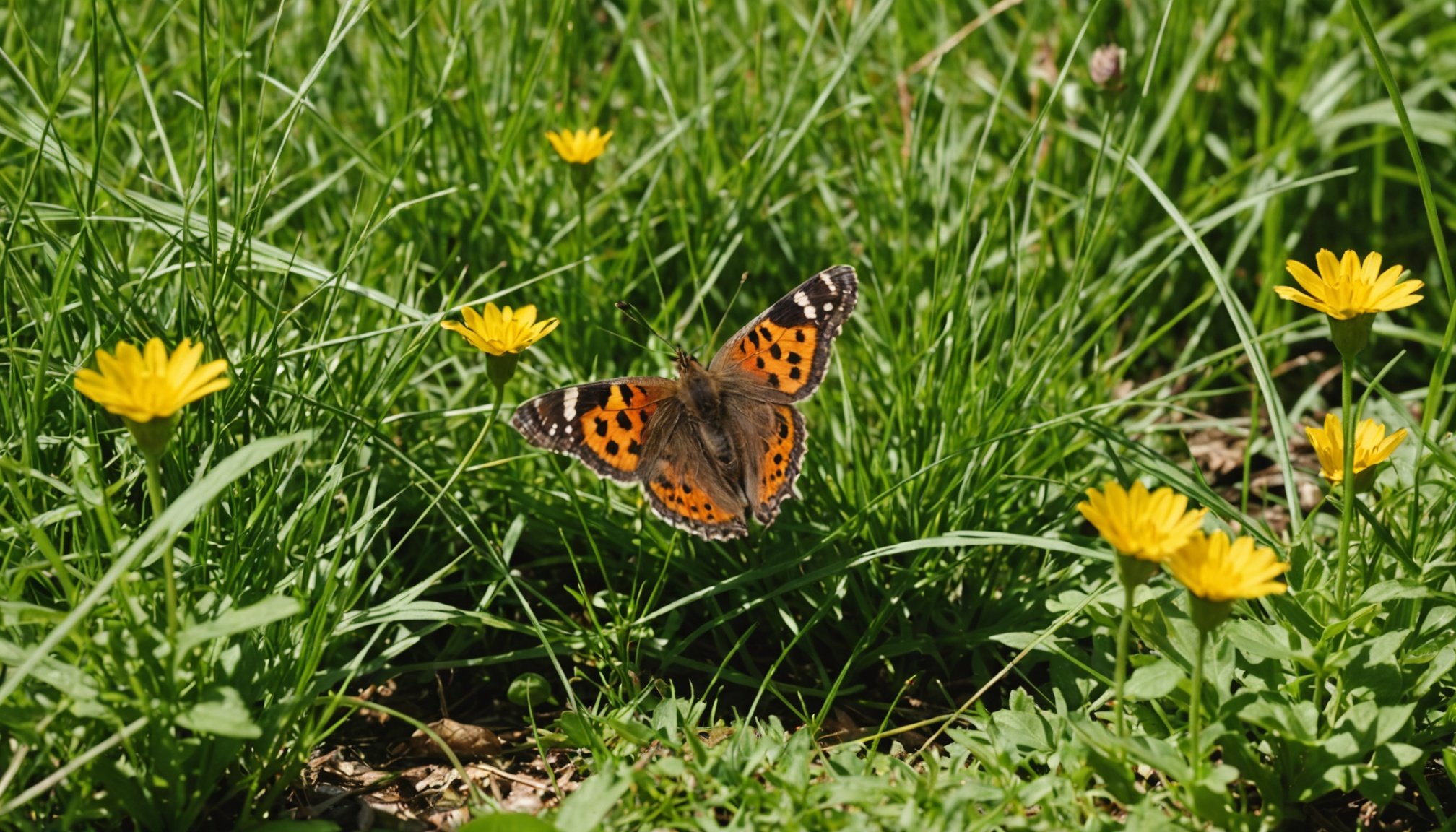Innovative Habitat Management by UK Wildlife Trusts: Fostering Biodiversity for Diverse Species
The Biodiversity Crisis and the Need for Innovative Management
The UK, like many other parts of the world, is facing a significant biodiversity crisis. The evidence is stark: in Scotland, for instance, one in nine species is at risk of national extinction, and the country is among the most nature-depleted in the world[1].
To address this crisis, UK wildlife trusts are at the forefront of innovative habitat management strategies. These efforts are crucial for restoring and preserving the natural balance of ecosystems, ensuring the long-term health of biodiversity, and mitigating the impacts of climate change.
Also to discover : Vital advice for birdwatchers in the uk: protecting rare species during nesting season
The Role of Wildlife Trusts in Habitat Management
Wildlife trusts across the UK are engaged in a variety of habitat management activities designed to protect and enhance biodiversity. Here are some key strategies they employ:
Riparian Management and Protection
Riparian zones, the areas along rivers and streams, are critical habitats that support a wide range of species. The Scottish Wildlife Trust, for example, emphasizes the importance of riparian management in their agricultural policies. They propose strengthening the conditions in the Base Tier of the Agricultural Reform Programme to improve biodiversity, particularly through the expansion of buffer strips along water courses.
Have you seen this : How UK Traffic Regulations Are Key to Protecting Native Wildlife from Roadkill
-
Buffer Strips: The current requirement for a 2-meter uncultivated area along water courses is seen as inadequate. The trust suggests increasing this to at least six meters to create more effective three-dimensional riparian buffer zones. This can improve soil health, reduce thermal stress on aquatic life, and enhance overall ecosystem functions[1].
-
Ecological Focus Areas: Riparian buffer strips can qualify as Ecological Focus Areas under greening requirements. However, the trust advocates for allowing restricted grazing within these areas to enhance plant diversity and prevent scrub encroachment[1].
Whole Farm Plans and Budget Allocation
Effective habitat management also involves comprehensive planning and adequate funding. Here are some key aspects:
-
Whole Farm Plans: The Scottish Wildlife Trust calls for clearer articulation of the purpose and intended outcomes of Whole Farm Plans. This includes setting a more purposeful timeline and ensuring that these plans align with the broader biodiversity strategy. For instance, the current requirement to complete a basic habitat map by May 2028 is seen as insufficient given the urgency of the biodiversity crisis[1].
-
Budget Allocation: The trust recommends reallocating a higher proportion of the agriculture budget towards nature and climate-friendly farming. Specifically, they suggest increasing the funding for the Agri-Environment and Climate Scheme to £55 million and ensuring that at least 75% of the farm budget supports nature and climate-friendly farming by 2028[1].
Biodiversity Net Gain (BNG) and Its Implementation
Biodiversity Net Gain is a concept that has gained significant traction in the UK, particularly since the country’s departure from the European Union. Here’s how it works and its implications for habitat management:
What is Biodiversity Net Gain?
Biodiversity Net Gain is a planning concept that requires developers to improve the ecological value of a development site. This involves not just avoiding biodiversity loss but also enhancing biodiversity by at least 10% through habitat creation, restoration, or enhancement[2].
Key Principles and Processes
-
Mitigation Hierarchy: Developers must follow a mitigation hierarchy to minimize the impact on biodiversity. This includes avoiding negative impacts, mitigating irreplaceable habitats, and compensating for any habitat lost[2].
-
BNG Assessments and Plans: A BNG assessment, plan, and report are necessary to ensure compliance. This includes identifying important habitats, protected species, and invasive species within the development site. The plan outlines the steps to avoid biodiversity loss and enhance biodiversity[2].
-
Habitat Management and Monitoring Plan (HMMP): To ensure long-term sustainability, a HMMP is required to manage and monitor the enhanced habitats for at least 30 years. This plan ensures that the habitat enhancements are suitable and sustainable[2].
Community Engagement and Cooperation in Conservation Efforts
Effective habitat management and biodiversity conservation require more than just policies and plans; they need the active engagement and cooperation of various stakeholders.
The Importance of Trust and Cooperation
Recent research has highlighted the critical role of trust and cooperation among stakeholders in achieving successful conservation outcomes. In the UK and Europe, the decline of breeding birds, for example, is attributed to multiple factors including habitat loss, agricultural intensification, and climate change. Addressing these issues requires continuous research, effective habitat management tools, and predator control strategies, all of which are facilitated by trust and cooperation among stakeholders[3].
-
Stakeholder Collaboration: Researchers, regulators, policy makers, conservationists, farmers, and the shooting community must work together. A study on landscape-scale conservation in England identified different types of collaborators among landholders, all of whom recognized the importance of building trust and open communication with conservation organizations[3].
-
Shared Understanding and Balanced Perspectives: Effective conservation requires a shared understanding, balanced perspectives, and mutual trust among all stakeholders. This collaborative approach not only strengthens conservation efforts but also aligns with broader goals of sustainable land use and biodiversity protection[3].
Practical Strategies for Effective Habitat Management
Here are some practical strategies that wildlife trusts and other stakeholders can employ to manage habitats effectively:
Habitat Restoration and Creation
-
On-Site Measures: Whenever possible, habitat enhancements should be made on-site. This can involve existing habitat restoration or new habitat creation. For example, developers can enhance biodiversity by recommending existing habitat enhancement or restoration, or by creating new habitats[2].
-
Habitat Banks: The concept of habitat banks, where areas of high biodiversity value are protected and managed, can be particularly effective. These banks can serve as reservoirs for biodiversity and help in the restoration of degraded habitats.
Ecological Focus Areas and Buffer Strips
-
Ecological Focus Areas: These areas, such as riparian buffer strips, can be designed to incentivize actions for nature and climate. By giving higher weightings to these areas, farmers can be encouraged to adopt regenerative farming practices that benefit biodiversity[1].
-
Buffer Strips: As mentioned earlier, expanding buffer strips along water courses can significantly improve ecosystem functions. This can include creating complex vegetation, incorporating trees, and ensuring a minimum width of six meters[1].
Examples and Case Studies
Scottish Wildlife Trust’s Initiatives
The Scottish Wildlife Trust’s work on riparian management is a prime example of innovative habitat management. Their proposals for strengthening the Base Tier of the Agricultural Reform Programme include expanding buffer strips and enhancing Ecological Focus Areas. These initiatives aim to improve biodiversity along rivers and streams, which are crucial habitats for many species[1].
Biodiversity Net Gain in Practice
In England, the implementation of Biodiversity Net Gain has led to significant improvements in habitat management. For instance, developers are now required to ensure that their projects result in a net gain of at least 10% in biodiversity. This has led to the creation of new habitats and the restoration of existing ones, contributing significantly to nature recovery[2]. and Future Directions
Innovative habitat management by UK wildlife trusts is a critical component of biodiversity conservation. By strengthening agricultural policies, implementing Biodiversity Net Gain, and fostering community engagement and cooperation, these trusts are making significant strides in protecting and enhancing biodiversity.
Long-Term Commitment
Effective habitat management requires a long-term commitment. The Scottish Wildlife Trust’s call for a higher proportion of the agriculture budget to be directed towards nature and climate-friendly farming is a step in the right direction. Similarly, the requirement for a 30-year management and monitoring plan under BNG ensures that habitat enhancements are sustainable in the long term[1][2].
Community Engagement
Community engagement is essential for the success of conservation efforts. By building trust and cooperation among stakeholders, wildlife trusts can ensure that conservation strategies are implemented effectively and sustainably. This collaborative approach not only benefits biodiversity but also aligns with broader goals of sustainable land use and environmental protection[3].
In conclusion, the innovative habitat management strategies employed by UK wildlife trusts offer a beacon of hope in the face of the biodiversity crisis. Through their efforts, we can contribute significantly to nature recovery, protect diverse species, and ensure a healthier environment for future generations.
Table: Comparison of Habitat Management Strategies
| Strategy | Description | Benefits | Challenges |
|---|---|---|---|
| Riparian Buffer Strips | Expanding uncultivated areas along water courses to at least six meters | Improves soil health, reduces thermal stress on aquatic life, enhances ecosystem functions | Requires significant land allocation, potential conflicts with agricultural practices[1] |
| Biodiversity Net Gain | Ensuring a net gain of at least 10% in biodiversity through habitat creation, restoration, or enhancement | Protects and enhances biodiversity, contributes to nature recovery | Requires comprehensive assessments and plans, can be resource-intensive[2] |
| Whole Farm Plans | Comprehensive planning to align with broader biodiversity strategies | Ensures coordinated and effective management, aligns with national biodiversity goals | Requires clear articulation of purpose and outcomes, can be time-consuming to implement[1] |
| Community Engagement and Cooperation | Building trust and cooperation among stakeholders | Strengthens conservation efforts, aligns with broader goals of sustainable land use | Requires continuous effort and communication, can be challenging to establish trust among diverse stakeholders[3] |
Detailed Bullet Point List: Key Principles of Biodiversity Net Gain
- Utilize the Mitigation Hierarchy: Minimize the impact on biodiversity by avoiding negative impacts, mitigating irreplaceable habitats, and compensating for any habitat lost.
- Eliminate Negative Impacts: Ensure that any negative impacts on biodiversity that cannot be offset elsewhere are eliminated.
- Involve All Stakeholders: Engage all pre-development and post-development stakeholders in forming mandatory net gain solutions.
- Understand Potential Risks: Determine the potential risks and variable factors to achieve biodiversity net gain.
- Secure a Better State of Biodiversity: Ensure the best possible outcomes from biodiversity net gain by determining a suitable method to secure a better state of biodiversity.
- Exceed BNG Requirements: Offer nature conservation that exceeds the BNG requirements.
- Focus on Long-Term Benefits: Generate long-term environmental benefits from biodiversity net gain.
- Cover All Areas of Sustainability: Incorporate economic and societal factors into the sustainability of biodiversity net gain.
- Communicate Outcomes Transparently: Communicate all biodiversity net gain outcomes with complete transparency[2].
Quotes and Insights
- “Delivering a nature positive future for Scotland requires a multi-sectoral, whole of society approach.” – Scottish Biodiversity Strategy[1]
- “The secret to lasting conservation success isn’t just research and strategy; it’s the essential but difficult establishment of trust and cooperation among stakeholders.” – Sophie Stafford, BASC[3]
- “By fostering trusting working relationships between stakeholders, it will be possible to create an environment where diverse landholders feel empowered to work together.” – Sophie Stafford, BASC[3]
These quotes underscore the importance of collaborative approaches and comprehensive strategies in achieving effective habitat management and biodiversity conservation.











